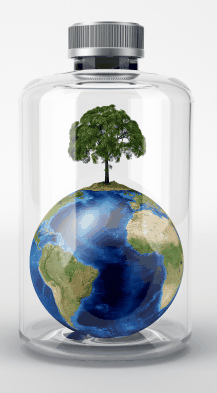We all need water to survive. And we all know the importance of getting enough water each day. Staying hydrated is absolutely crucial to maintaining our health and allowing our body to function optimally. However, water can be a major source of toxic substances. But what are toxins anyway? And how do they get into the water supply? These questions are answered below, along with suggestions to ensure that the water you drink is as toxin free as possible.
What are toxins anyway?
Toxins are potentially harmful substances in the environment that your body does not want or need. In fact, toxins can have adverse effects on our body’s biochemistry if our exposure to them is severe.
How do toxins end up in water?
Toxins from the environment can end up in the water supply through a number of routes. If you think about the process of water movement, you might realize that water actually comes into contact with the ground and the air. Both of these are potential sources of toxic contamination. Bottled mineral water goes through a strong filter process involving many different layers of rocks, ground, and sand and so on. Tap water might pick up toxins from the pipes it moves through. Additionally, the water that we pass through urination and flush into the sewage system is recycled back into the water supply.
Certain techniques are used to remove (as much as possible) any toxins from our drinking water. However, these attempts to make our water pure are not 100% foolproof. In actual fact, they do an excellent job but tiny doses of various toxins remain. For example, medication is not always fully absorbed into our bodies; sometimes it leaves our bodies when we urinate and enters the water supply. Toxic industrial waste is also likely to end up in lakes, rivers or oceans. If this water is recycled into drinking water, small amounts of these toxic waste products may remain.

That’s enough negativity; now let’s move on to thinking about ways in which we can make sure that the water we put into our bodies is as toxin free as possible. If you mostly drink tap water, you might want to consider using some kind of water purification system. Water distillers and reverse osmosis filters are excellent ways to purify water by removing all toxins from the water. Unfortunately, these methods also remove minerals from the water. Carbon water filters remove most of the toxins and leave the minerals alone.
If you tend to drink bottled water, it is important to be cautious about which brands you buy. A great deal of bottled water is simply just bottled tap water, so think about this when you make your purchase. The bigger brands of bottled water might be considered more trustworthy, but you should still do your homework before you fully hand over your trust to these companies.
The more famous bottled water companies will have websites that you can visit. Take a look at the water quality reports, and make sure that reports are conducted frequently. Pay attention to toxins such as mercury, lead, copper, sodium, tin, arsenic, aluminum and hydrogen sulfide.
Bottled water is regulated by the FDA so trusted brands should not contain toxins at all, or if it does, it should only contain traces. Tap water on the other hand is less pure because of the movement process; water has to travel through the pipes in your town and the pipes in your home.
If you chose to have your tap water tested for any of the toxins listed above, you can either ask your local health departments to perform the test or you can contact private water testing companies. The first option is likely to be free, but the quality of the testing is likely to be inferior to private companies.
Most people simply don’t realize that the water they drink isn’t necessarily as pure as they assume it to be. Actually, water can contain a whole multitude of toxins. OK, maybe the toxin levels are minimal but over long periods of time, toxins can accumulate in our bodies so there really is no harm in spending a few moments of your life making sure your water is as pure as it possibly can be. This is especially true of tap water because even if the water is checked, it can still pick up toxins at any point in its journey to your glass.
If you have a few minutes, check out Water Conservation Org. If you have a couple extra bucks, donate to a water conservation project. We all share the same water … and we ain’t gonna’ get more.

